- Climbing & Expeditions Tibet
- Feature Trips / Mt. Kailash
- Other Region
- Tibet
- Tour in Tibet
- Trekking in Tibet
The Mt Kailash Tour via Simikot is a unique spiritual experience as the route leads you to the sacred Mt. Kailash and includes the 3-day Kora around the mountain. The Kora is the holy circulation of the sacred mountain. However, many Tibetans do the Kora in one day, and you will also meet prostrators who take around three weeks to complete the circuit. Certainly, Mt. Kailash is Tibet’s and one of the world’s most sacred mountains, and a destination for many pilgrims.
Further, trekking from Simikot to Tibet provides an opportunity to experience both Nepalese and Tibetan culture. First, Sightseeing in Kathmandu and trekking through Nepal’s himalayas will give you insights into Nepali culture, history and traditions. Further, we arrive in Simikot, opened to trekkers only in 1993. In fact, it is the seat of Nepal’s most remote district, Humla, several days’ walk from the nearest major village. There is a continuous stream of “Humli” people from surrounding villages trading, buying supplies and dealing with various bureaucracies. After a few days of trekking, we reach a stone pillar that marks the Nepal-Tibet border. However, just across a rickety wooden bridge, it is perhaps one of the most informal border crossings in the world. It’s a short climb to Sher, a Tibetan salt trading post at 3860m. After a short drive to Taklakot, the Chinese border guards will want to see your passport and Chinese visa. The upcoming days in Tibet and especially the Kora are going to be an unforgettable experience!
Outline Itinerary:
01 Arrival in Kathmandu
02 Sightseeing in Kathmandu & trip preparation
03 Flight to Nepalgunj: 1 hour
04 Flight to Simikot (2,985m/9,790ft), and trek to Dharapori (2,360m/7,740ft): 4 – 6 hours
05 Dharapori to Kermi (2,860m/9,383ft): 5 – 6 hours
06 Kermi to Yalbang (2,879m/9,445ft): 5 – 6 hours
08 Tumkot to Yari (3,663m/12,017ft): 6 – 7 hours
09 Yari to Hilsa (3,647m/11,965ft) via Nara La pass: 5 – 6 hours
10 Hilsa to Purang (3,772m/12,375ft): 2 – 3 hours
11 Purang to Montser (4,450m/14,599ft) and sightseeing in Tirtapuri: 3 – 4 hours
12 Sightseeing of Garuda Valley, then transfer to Darchen (4,560m/14,956ft): 3 – 4 hours
13 Kora day 1: Dira Puk Monasteries (5120m/16,792ft): 5 – 6 hours
14 Kora day 2: Zuthulphuk (4790m/15,765ft) via Drolma La Pass (5600m): 6 – 7 hours
15 Kora day 3: Back to Darchen (4,560m/15,000ft): 3 – 4 hours, and transfer to Manasarovar
16 Tour of the Mansarovar Lake
17 Mansarovar to Saga (4,600m/15,088ft): 8 – 9 hours
18 Drive Saga to Kerung
19 Drive back to Kathmandu via Syabrubesi (7-8 hrs)
20 Final Departure
Arrival in Kathmandu
Full day sightseeing of Kathmandu Valley, visa and permit preparation day
Kathmandu Durbar Square – Kathmandu Durbar Square lies in the center of the Kathmandu valley and has some of the most interesting monuments in Nepal. The Kasthamandap, the building from which Kathmandu derived its name, the Kumari Ghar, the House of the Living goddess Kumari, the Taleju temple and the most interesting the Hanuman Dhoka Palace, now a museum are some of the interesting buildings in Kathmandu Durbar Square. Besides that the program of different kinds and gathering of people from all over Nepal makes it a lively place and the best place to understand Nepal.
Swayambhunath Stupa– Swayambhunath stupa is also referred as the ‘Monkey temple’ and is one of the 7 UNESCO world heritage sites of Kathmandu. Situated on a hill top about 4 Km from the city center this stupa is one of the oldest monument in Kathmandu and comes from the Vajrayana sect of Mahayana Buddhism. With a pair of eyes in each direction this place is a spiritual center for the locals and tourist visiting this area. The hill top also offers the scenic view of the Kathmandu valley and the Himalayas.
Khokana and Bungmati– These two Newar Villages are located in the outskirts of the Patan District and are proposed as Tentative UNESCO heritage sites by the Nepal government. Khokana has the temple of Rudryaini and is also famous for the Mustard oil production. Bungmati, 20 minutes walk from Khokana through paddy fields is full of old Newari houses and architecture. These twin villages are one of the best places to experience Nepal’s age old heritages and to observe the daily life of the People. You will feel like walking in the 18th century Europe as you go through these streets.
Flight from Kathmandu to Nepalgunj
Flight to Simikot (2,985m/9,790ft) and trek to Dharapori (2,360m/7,740ft)
Walking time: 4-6 hours
Dharapori to Kermi (2,860m/9,383ft)
Walking time: 5-6 hours
Kermi to Yalbang (2,879m/9,445ft)
Walking time: 5-6 hours
Yalbang to Tumkot (3,073m/10,082ft)
Walking time: 5-6 hours
Tumkot to Yari (3,663m/12,017ft)
Walking time: 6-7 hours
Yari to Hilsa (3,647m/11,965ft) via Nara La pass
Walking time: 5-6 hours
Hilsa to Purang (3,772m/12,375ft)
Walking time: 2-3 hours
Purang to Montser (4,450m/14,599ft) and sightseeing in Tirtapuri
Walking time: 3-4 hours
Sightseeing of Garuda Valley, transfer to Darchen (4,560m/14,956ft)
Walking time: 3-4 hours
First day of Kora: hiking to Dirapuk Monasteries (5120m/16,792ft)
Walking time: 5-6 hours
Second day of Kora: hike to Zuthulphuk (4790m/15,765ft)
Walking time: 6-7 hours
Third day of Kora: hiking to Darchen (4,560m/15,000ft), transfer to Manasarovar
Walking time: 3-4 hours
Tour of the Mansarovar Lake
Mansarovar to Saga (4,600m/15,088ft): 8 – 9 hours drive
Drive Saga to Kerung
Drive back to Kathmandu via Syabrubensi (7-8 hrs)
Final Departure
The Mt. Kailash Tour
Trekking Nature Trail’s 19 days Mt. Kailash trekking tour via Simikot gives the adventurous traveler an opportunity to enjoy the mesmerizing beauty of both Nepalese and Tibetan landscapes. On this challenging trip which begins with a pleasant drive from the Nepal-Tibet border, we make our way to Mt. Kailash, completing a six-day-long and beatiful walk from Simikot. The Mt Kailash trek via Simikot gives the adventure-seeking traveller an ultimate adventure experience! The six-day trek through Simikot is helpful in acclimatizing to the high mountainous region, and minimizes the risk of high altitude sickness. This is why the Simikot trek is most widely used by tourists who plan on visiting the Mt. Kailash area. Unfortunately, there is no direct flight from Kathmandu to Simikot. You must fly 1 and half hours to Nepalgunj on the Southern border of Nepal, spend a night and take an early morning flight to Simikot. If you want to walk to Simikot, takes about 15 days from Surkhet. It takes about 50 minutes to fly the 218 km from Nepalgunj to Simikot, almost the entire width of Nepal, over a 3800-metre pass.
The trek will also delight those who seek a taste of the spiritual side of Tibet and Nepal.
Mount Kailash, a holy Mountain
Mount Kailash (Kangrinpoche) situated at western part of Tibet, has been considered sacred by Buddhists, Hindus, Jains and Bonpos for thousands of years. For Hindus and Buddhists it is the center of the Universe. It is atop this mountain that Lord Siva dwells in meditation. A pilgrimage to the mountain and around it is a sacred goal for the faithful. Pilgrims walking overland for weeks or months, feel they are really approaching the Center of the Universe as they reach Kailash. It has been a pilgrimage site for centuries. Mt. Kailash is also revered as the source of four of the great rivers of Asia, fueled by the waters of the nearby holy lake Mansarovar.
We have been operating the Kailash tour for years, along different routes. Below is a normal itinerary for a round trip to Mount Kailash. E-mail or fax us for alternative routes based on your specific time and budget considerations.
Spiritual journey of a lifetime
After six days of walking, and one day of driving, we reach the foot of the mighty Mount Kailash! Here, we begin the Kailash Kora or Parikrama; a spiritual walk across a panorama of extraordinary scenery. This walk is a pilgrimage for both Buddhists and Hindus who revere the mountain which was once believed to be the abode of their deities.
A visit to Gyandrag Monastery may be arranged if the traveler wishes to make an additional one-night stay at Darchen. The monastery is located about five kilometers from Darchen village and takes approximately three hours to get to. Gyandrag Monastery was built in the 12th century by Zhikon Kuyay Ganpa and offers a glimpse into more than 800 years of fascinating history. This Monastery belongs to the Kagyu sect and was renovated in 1985. It provides comfortable accommodations, and the additional time spent at the monastery helps the traveller better acclimatize to the high altitude of the region.
Symbolic of spiritual beliefs as well as an oasis of natural beauty, a visit to Mt. Kailash will surely exceed all expectations of travelers to the region! The King of Holy Mountain, Mt. Kailash is also known as Mt. Meru. This mountain is the center of the Buddhist world where the founder of Buddhism, Sakyamuni, performed Buddhist rites. It is also known as the Hall of the Lord Shiva in Hinduism. This is no imagined world described in Abhidharmako satra of Buddhist scripture, but a real Mountain, offering deep, spiritual peace, that the traveler may experience first-hand. Mt. Kailash’s peak is the highest snow-capped peak in the grandiose range, and the meaning of the name, Kailash, is precious snow mountain or saint in the Tibetan language. Mt. Kailash is a Sacred Mountain in Tibet. The elevation of Mt. Kailash is 6,714 meters above sea level. The picture of Kailash is often placed together with the figure of Buddha on the Buddhist shrines of Tibet. Travelers making the Mt. Kailash trek via Simikot have the opportunity to visit more spiritual sites as they make this wonderful pilgrimage around Kailash.
Lake Mansarovar
The great lake Mansarovar is situated in the south-west corner of Tibet and in the north-west of Nepal . It beyond high Himalayas which borders Nepal and
China . Tibetan plateau in itself is unique in its geographic make up with its fauna and flora and mythical setup of ecosystem. The lake is 20 kms from Mount Kailash and is one of the most beautiful and sacred lake in Asia . It can be circumambulated in four or five days. It is often a gem like cobalt blue color
but during storm, it can turn into a churning black sometimes.
According to Hindu and Buddisht epics, the four great rivers of the Indian sub-continent, the Indus , Ganga , Sutlej and Brahamaputra actually arise from
Mansarover. In reality, only the Sutlej originates from the lake. Lake Mansarover has been circumambulated by the Indian pilgrims at least since being extolled in the sacred Sanskrit literature called the Puranas around 1700 years ago. Legends has that the mother of Buddha, Mayadevi was bathe at Mansarovar by Gods before giving birth to her son.
In a hundred ages of the gods i could not tell thee the glories of [the Himalaya…there is no mountain like…the Himalaya… for in it
are Kailash and Manasarovar. From the Hindu epic Ramayan.
How to avoid Altitude Sickness during the Kora:
High attention should be paid to the altitude sickness during your Tibet tour, especially when taking the strenuous Kailash tour or Kora. All ‘Nature Trail Trekking’ guest are supposed to have trekking experience at an elevation of above 4,000m before kora around Mount Kailash. Since there are enough time for tourists to get used to the high altitude on the way from Lhasa to Mt. Kailash, one should not worry too much thought! And there are some tips on avoiding altitude sickness when taking an adventure around this holy mountain or any other thinking in Nepal above 4000m.
Avoid the High Altitude Sickness during Mount Kailash Tour or Kora all valuable Nature Trail guests are request to follow following guides lines to avoid suffering from the high altitude sickness during their trips.
1. Move slowly and steadily during your kora, do not get too excited. Do not ascend too fast on the way, especially when climbing the Drolma La. Drink plenty of water before departure, since dehydration may be caused by sweating due to the dry and cold air in the high mountain.
2. In order to fully acclimatize, stay two or three days rest days in Nepal before heading for Mt. Kailash to better adapt to the high altitude. Do not take a cold shower on the first two days after you enter Tibet.
3. Bring the necessary medicines in case you suffer from mild altitude sickness or catch a cold. Recommended medicine includes – Ibuprofen Sustained Release Capsules (treating low fever and headache), Oral Magnesium Gluconate Solution (replenishing one’s strength), multi-vitamins, anti-motion sickness drug, Quick Acting Heart Reliever, Diamox Sequels (acetazolamide (Rx),etc.
4. Ensure adequate sleep and have a good rest. Do not be nervous, since the symptoms of altitude sickness will get worse once you get stressed out.
5. Prevent yourself from catching a cold. When travel around Tibet or higher altitude, you should attach importance to the cold, since it can be easily transformed to other serious altitude sickness, like pulmonary edema and encephaledema, or high-altitude cerebral edema (HACE). If you catch a cold before entering Tibet, you’d better reschedule your trip to regain your health first.
6. If you suffer from altitude sickness during your kora, showing some symptoms as losing appetite, nausea, vomiting, insomnia, dizziness, headache, breathlessness and breathing irregularity etc, you should stop ascending immediately; otherwise more serious problems may occur and even cause death sometimes within just a few hours.
7. It is not suggested to inhale oxygen to copy with mild hypoxia symptoms, so that you can acclimatize the high altitude environment in less time. Normally, slight altitude sickness can be self cured. Do not turn to the oxygen bottle frequently in case you become dependent. Keep consulting with your guide and team leader how your body acting.
8. Do not pack too many things in your backpack. Try to travel light as possible as you can to conserve strength. If you do feel tired or exhausted during your trekking, you can also hire a horse or Yaks from locals to carry your luggage.
Price and Service Details:
| DEPARTURE/RETURN LOCATION | Kathmandu | |||||||||||||||||
| JOIN GROUP | 3 before departure from Kathmandu. | |||||||||||||||||
| SERVICE INCLUDES |
|
|||||||||||||||||
| SERVICE DOES NOT INCLUDE |
|

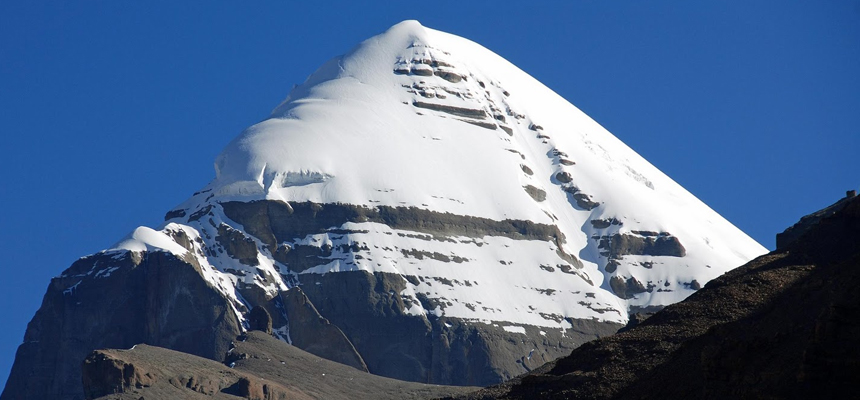
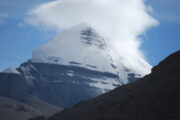
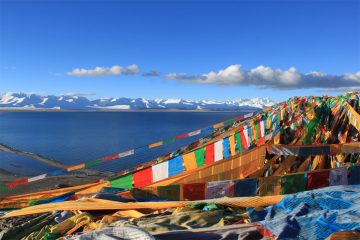
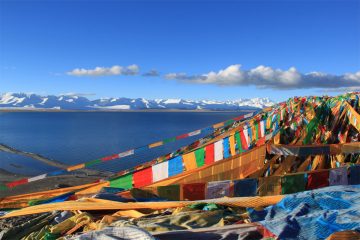
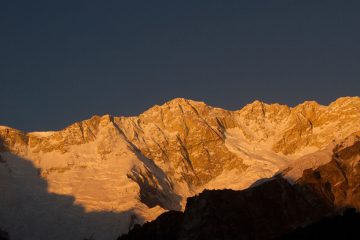
Tour Reviews
There are no reviews yet.
Leave a Review